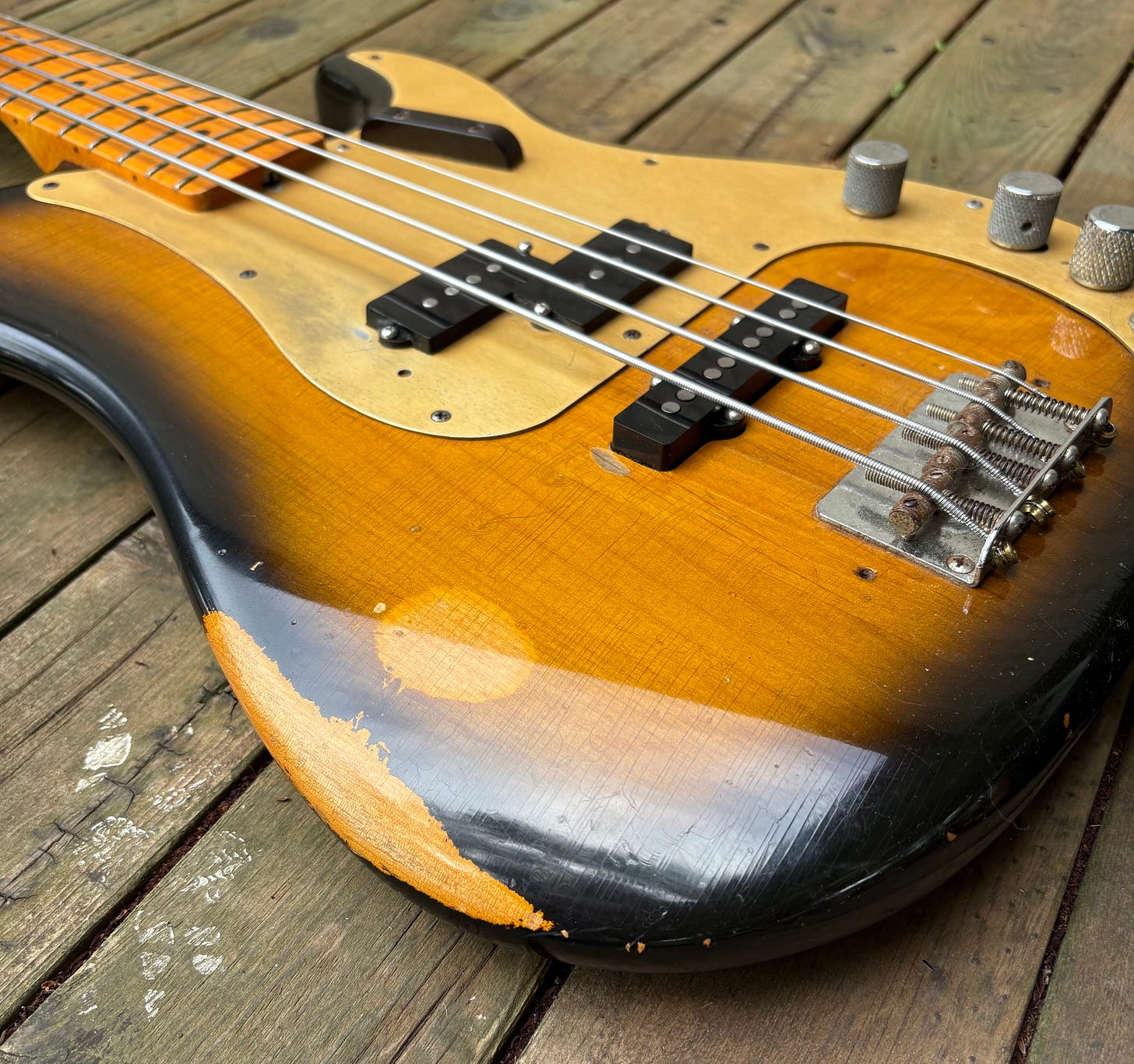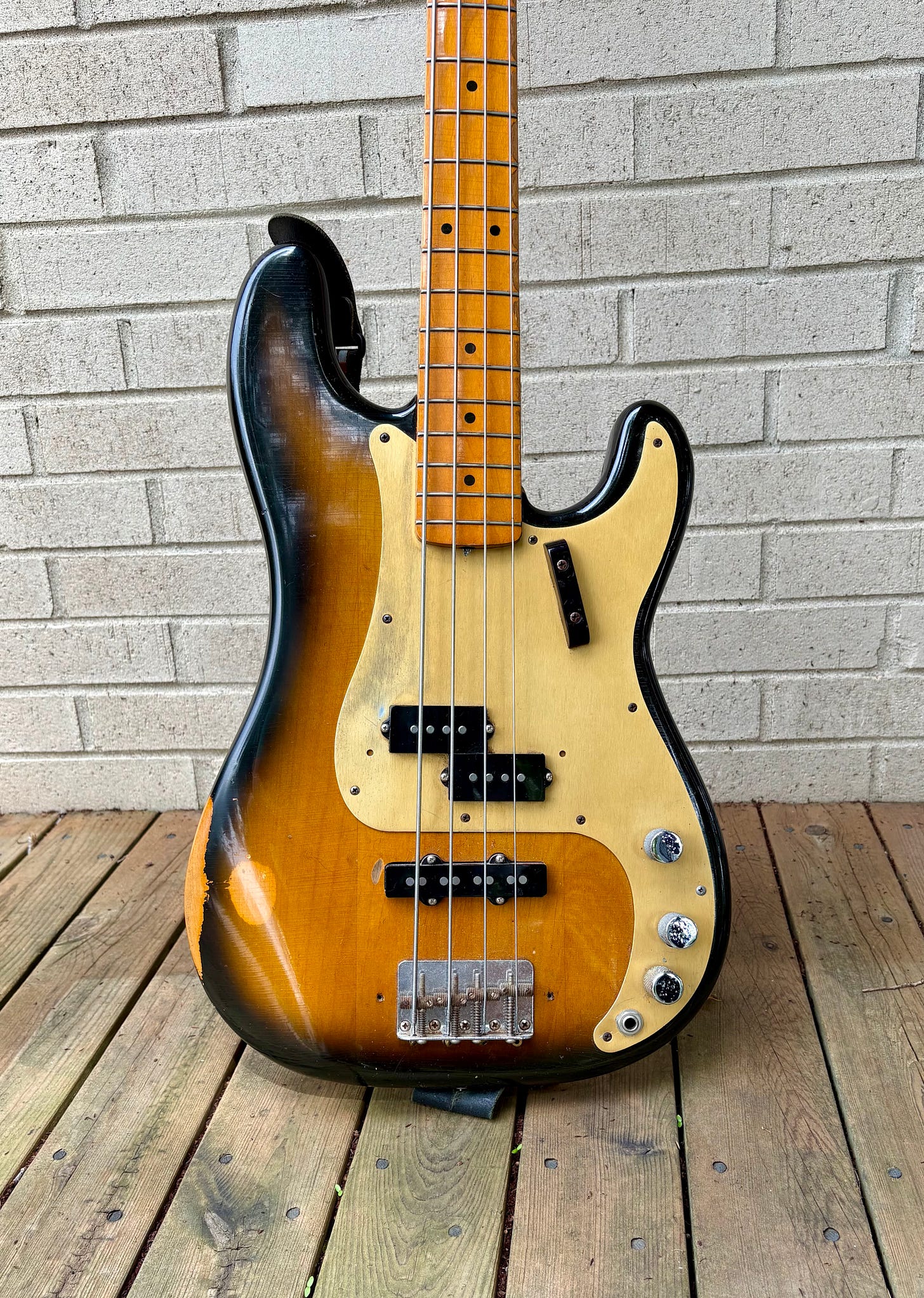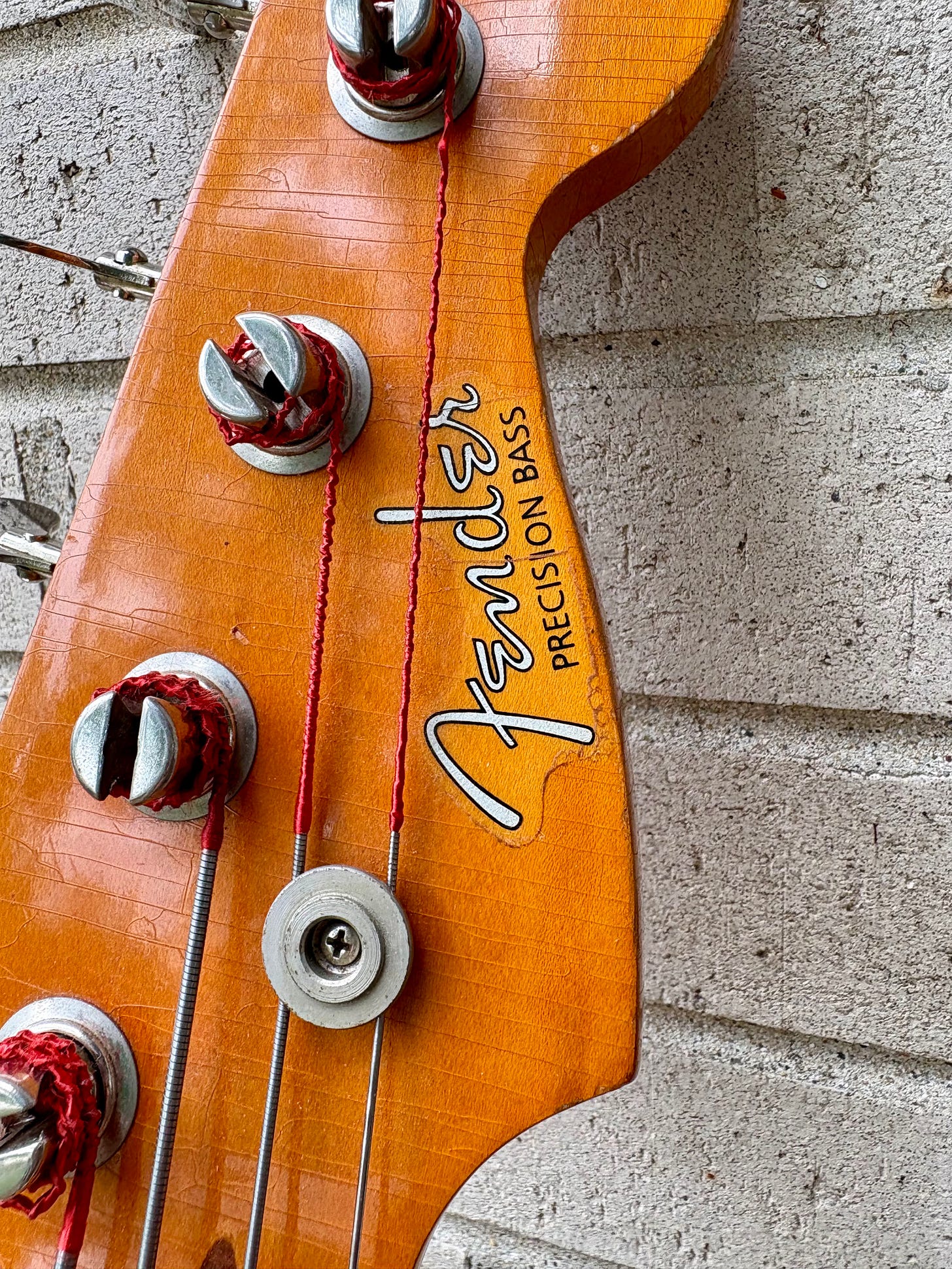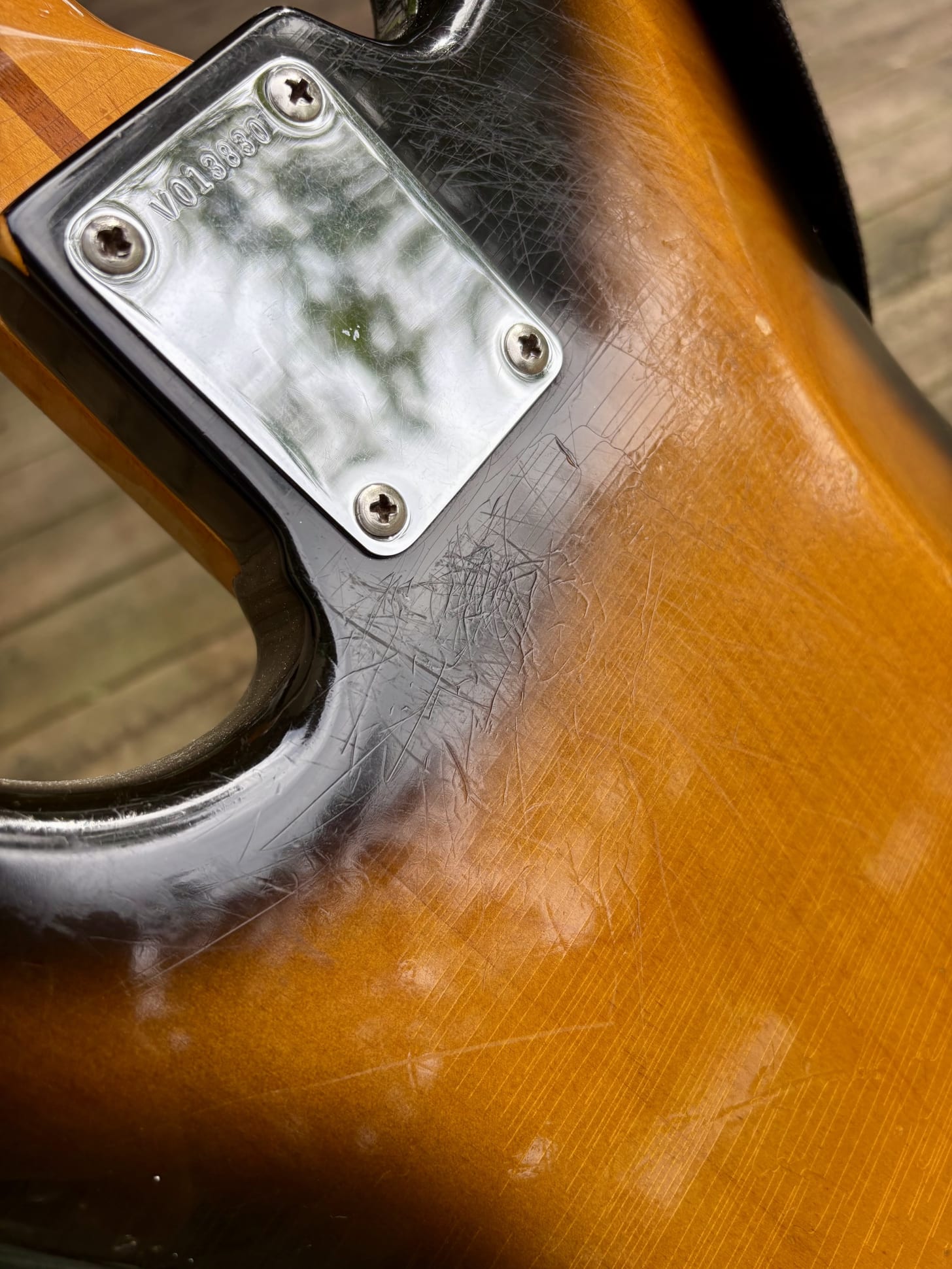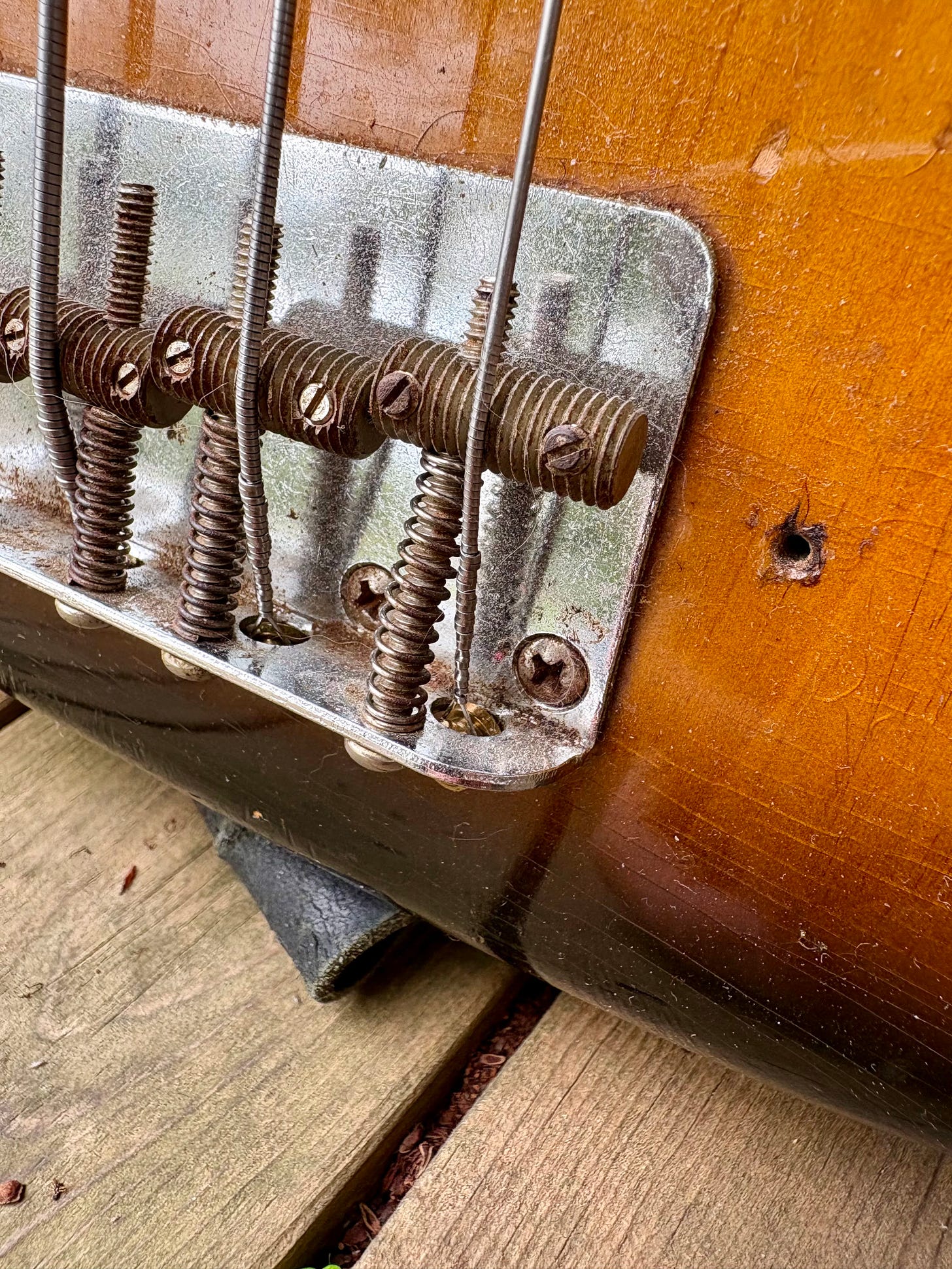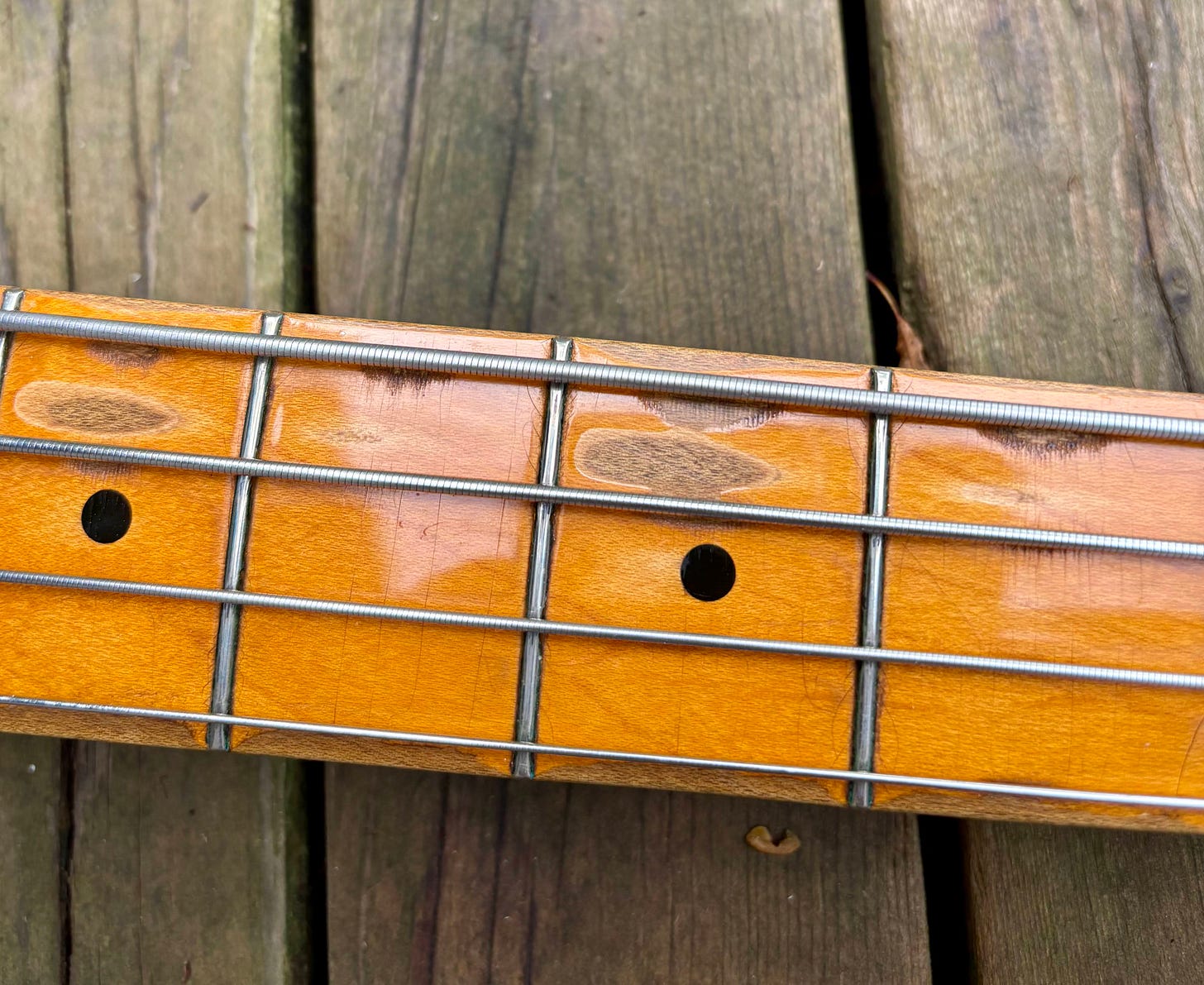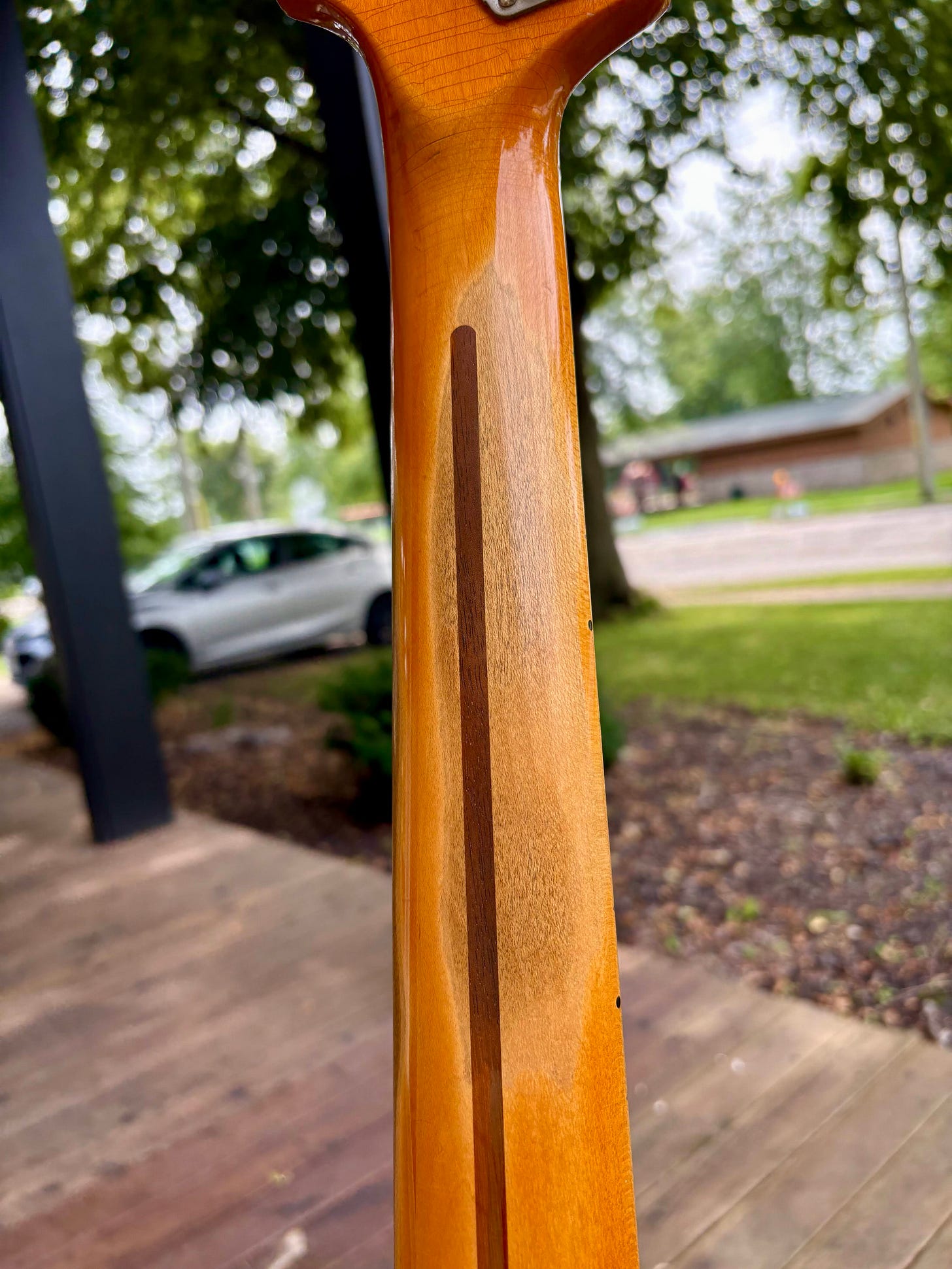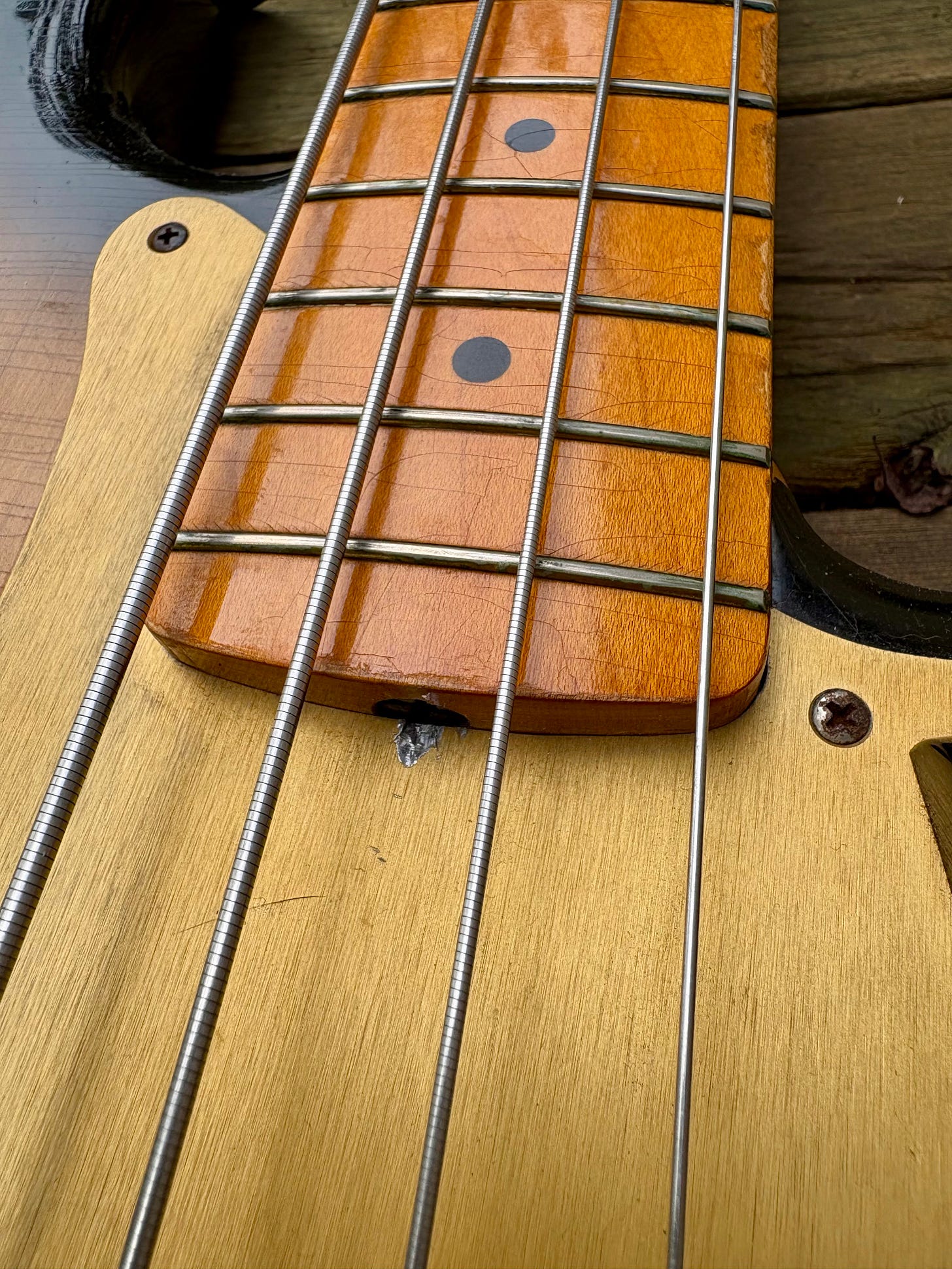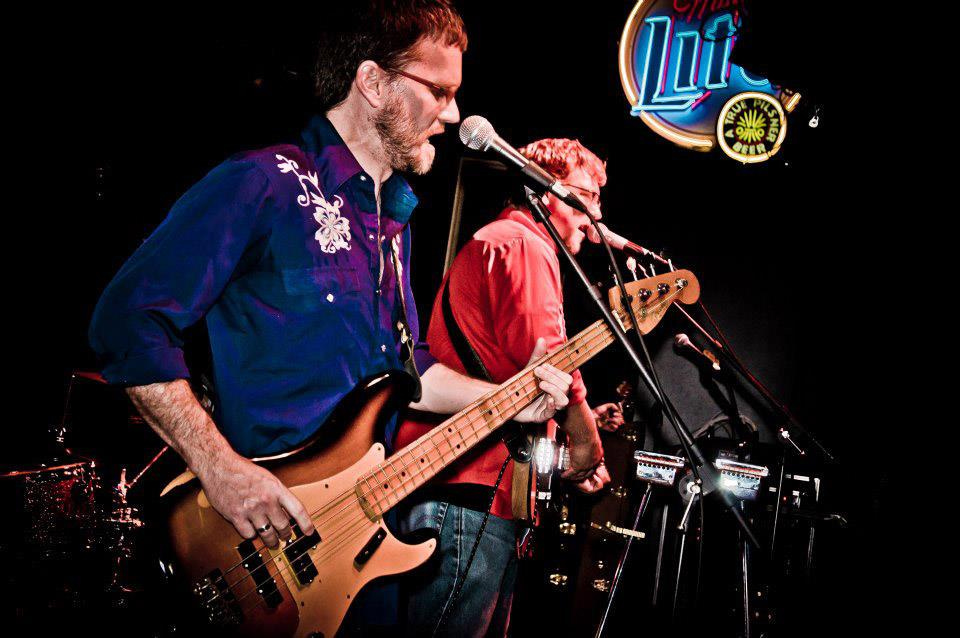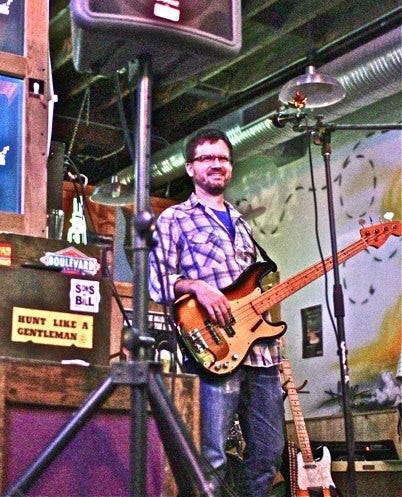I’ve always had a bit of a love affair with certain material things, even though I’ve never been wealthy enough to acquire most of them. And there’s certainly some childhood pop psychology involved there, but let’s ignore that for now. The point is, sometimes a physical object just becomes super important to me. This is often something either automotive or musical, two hobbies I’ve spent a lot of time on in addition to my “real” job teaching visual arts. I went through a phase several years ago when I obsessed over vintage guitars, learning as much as I could about them (even though I’m a crappy guitarist at best). I don’t pay close attention to that particular subgenre of collecting anymore, but one particular instrument remains in my hands. And it’ll stay with me as long as I have a say in that.
Please say hello to the bass guitar that was my main instrument when I played in bands for over a decade. This is a 1982 Fender (‘57 reissue) Precision Bass, much loved and modified, and this essay is all about why it’s so cool.
So first of all, this bass is what’s known as a “Fullerton” reissue. When Fender started to realize there was a market for guitars that were built like their early ones, this was the beginning of the whole vintage reissue craze. Fender’s quality had suffered in the ‘70s and ‘80s, especially after being bought by CBS, and therefore many serious players and collectors really appreciated the ones built in the ‘50s and early ‘60s. Almost everyone agreed that handcrafted electric instruments were superior to mass produced ones, and this is generally still accepted in most circles. In the early ‘80s, Fender challenged a small group of employees to try to build limited runs of guitars and basses that were up to the old standard. (This would be the group that later formed the Fender Custom Shop.) They used original plans and templates, and turned out a run of high quality instruments that were built by hand in the Fullerton, California factory (hence the nickname) between 1982 and 1985. All of these were created as “reissues” of early guitars, specifically the ‘52 Telecaster, ‘57 and ‘62 Strats, and ‘57 and ‘62 P-Bass and ‘62 Jazz Bass.
Anyway, much has been written about this Fullerton series and you can use the google machine if you want to learn more, because I’m certainly not an expert. But let me get back to my own experience. As someone who was interested in vintage guitars but also financially challenged, I got into the hobby by buying things I thought were interesting, and this usually translated as modified, extremely worn, or not as highly sought after for whatever reason. Around 2008 I was working on starting a band too, and had been piecing together bass guitars from parts, learning a bit about that side of the hobby as well. I had owned a few basses that I thought were cool because of their age, but that weren’t really great players. These were mainly ‘70s Fenders, along with a few other oddball things. At some point I had a ‘73 P-Bass that was Candy Apple Red, but that was by far the best thing about it. It was heavy and just didn’t feel all that great to play.
I used to be pretty active on the TalkBass forums, buying and selling and discussing things. So I put the ‘73 up for sale or trade on that board, and got a few offers. Then someone offered me a Fullerton ‘57 Precision in trade for it, straight across. Both basses were modified with an added Jazz pickup, and in similar condition. I had heard the Fullerton myth but never had one in my hands, so I thought why not? Let’s see what that’s all about.
And that’s how I acquired this bass you see here. It had active EMG pickups when I got it, and I wasn’t really a fan of those, but I loved how it felt. It just played so smoothly, even in my amateurish hands. It already had a LOT of player wear, as you can see by the fretboard, neck and body. Someone really enjoyed this thing on a regular basis before me. So I set about making it even better, and since it was already modified and very worn, that mostly just meant making it consistent with the whole vintage vibe. I installed a set of Fralin passive pickups, and put some flatwound strings on, and that’s really all it took. At that point it was clearly the bass I preferred over anything else I’d played.
Make no mistake: the wear you see on this bass is honest wear. It’s become very popular to “relic” a guitar and make it look like this, but the Fullertons were built to look new, just like they did in ‘57. When you see an instrument that’s been played this hard, that usually means it’s a good one.
Anyway, that bass became my main tool for the next decade of musical adventures. I acquired and sold a few others along the way, and now that I’m not really active in any bands I decided to sell most of my gear. But the Fullerton stays. It’s even cooler to me now because I have history with it. Most of my favorite times playing music were with this bass strapped on. And maybe sometime in the future I’ll make some more of those memories with it. For now, I like to keep it out where I can stare at it and pick it up once in a while. Hopefully these photos help capture a little of its hard-earned patina, and maybe a visual representation of the magic it brings. Please enjoy.
P.S. I’m throwing in a few pics at the end of me with this bass in action. After all, that’s really what it’s all about.




